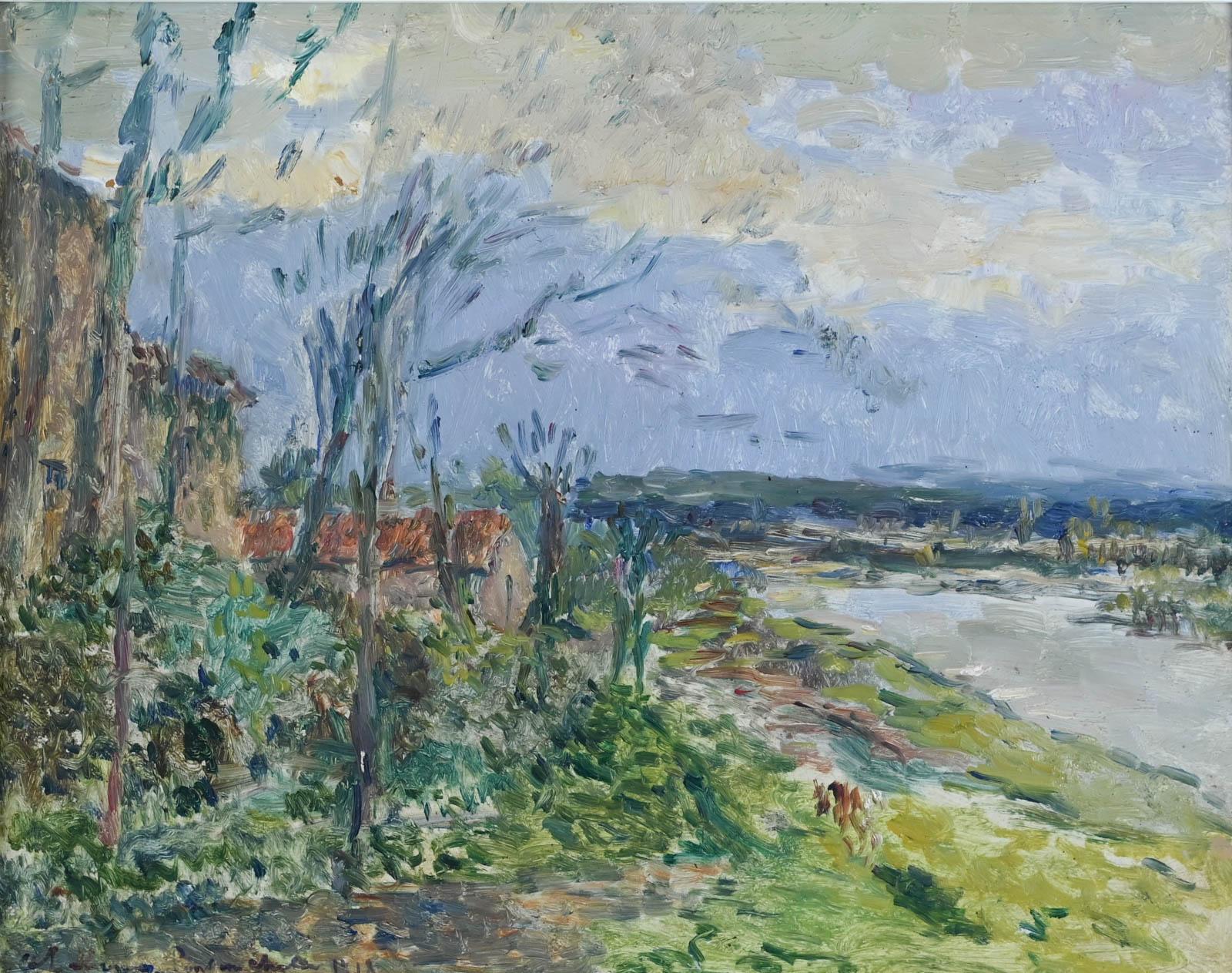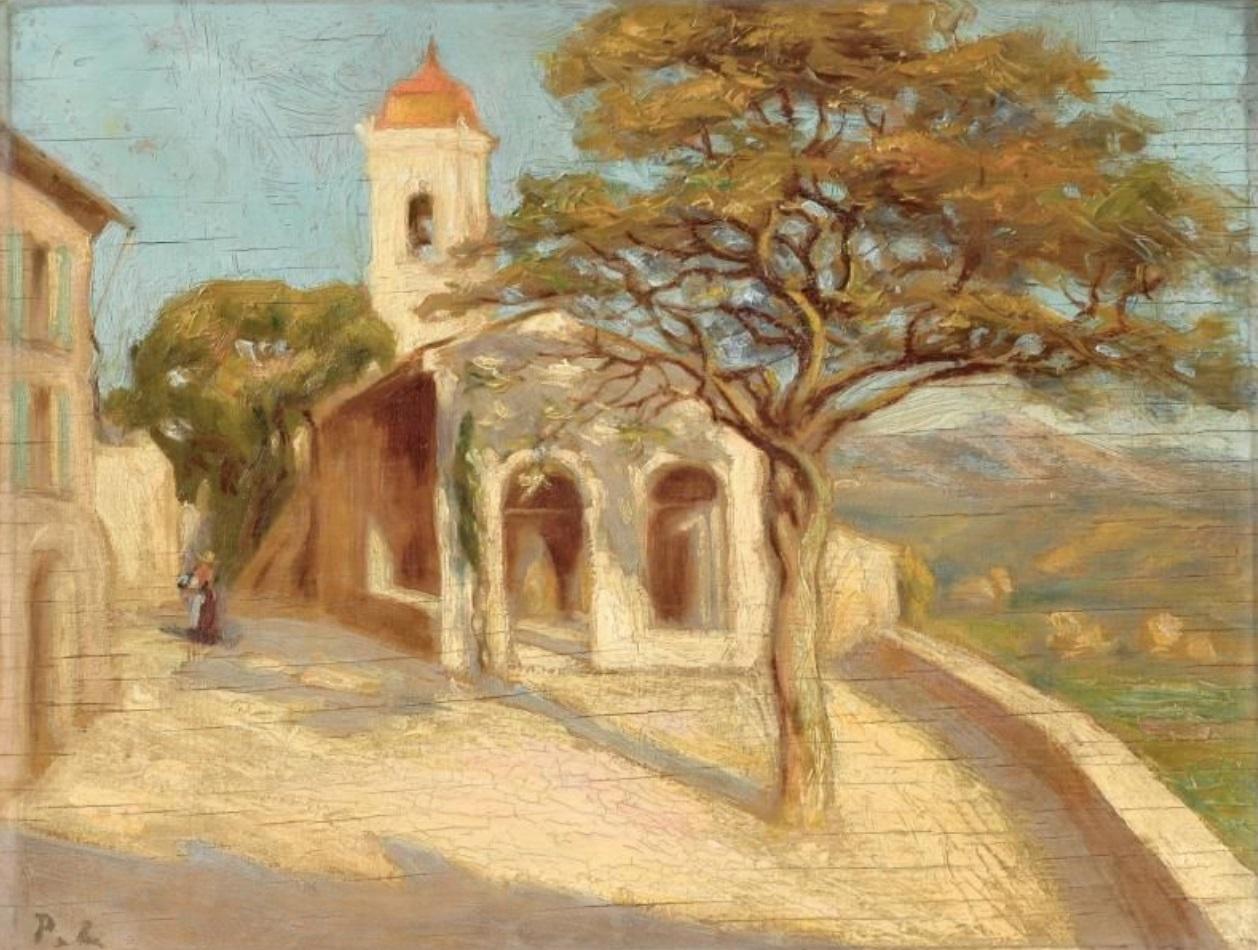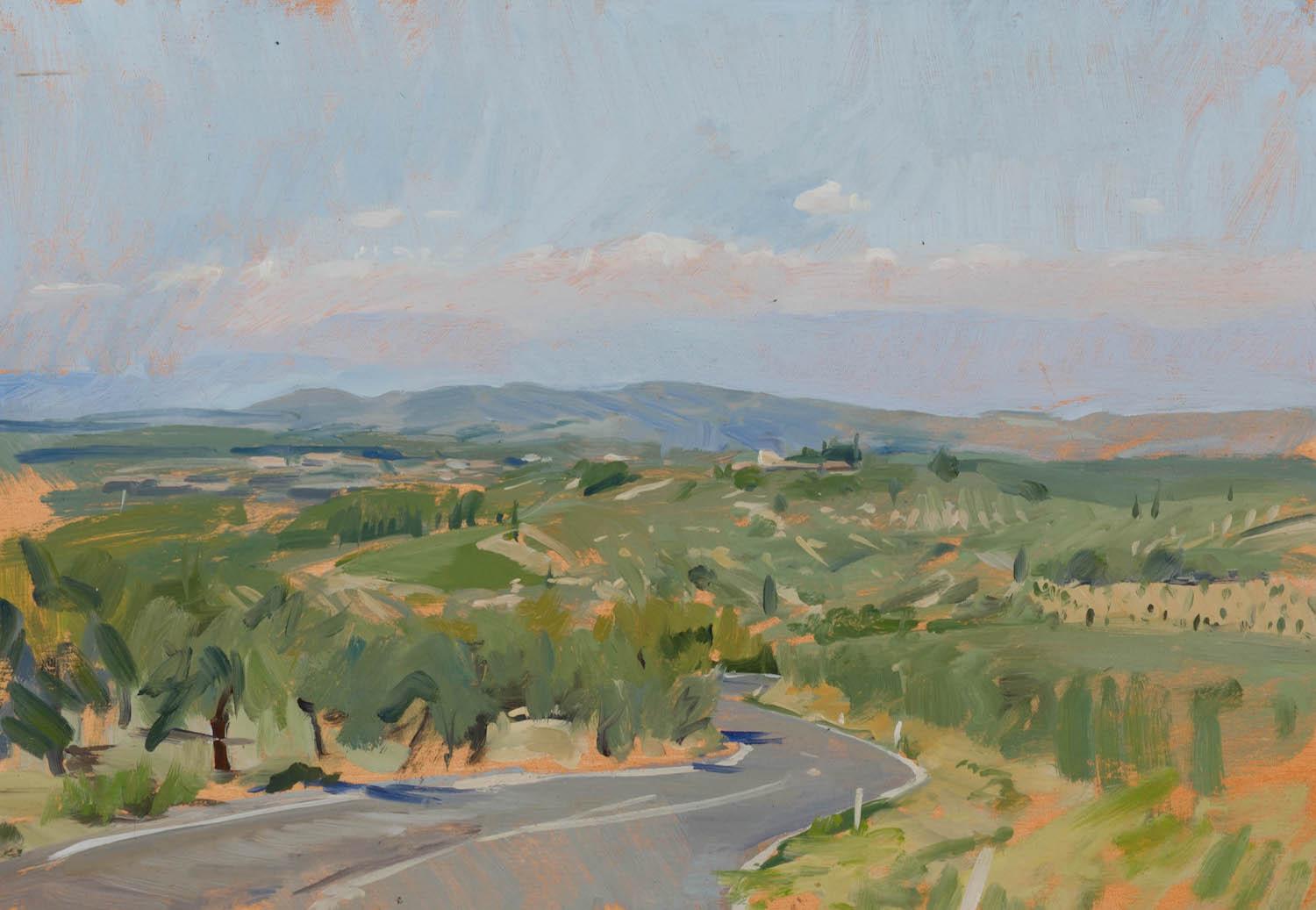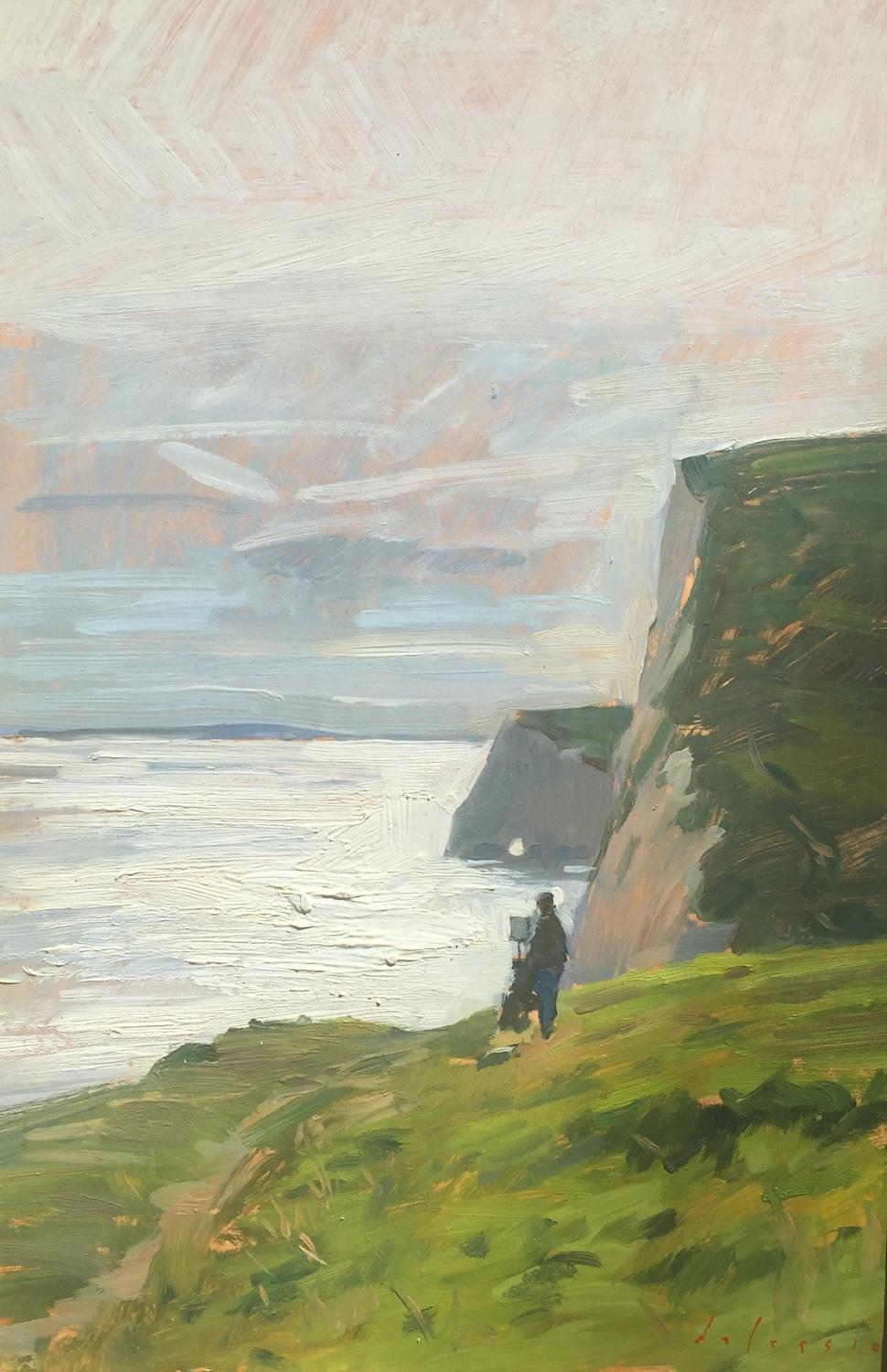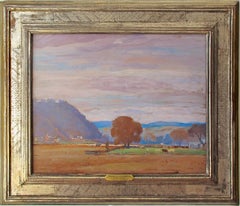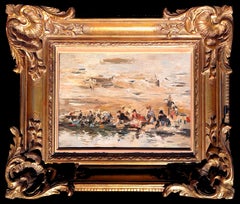
Notre Dame from the Left Bank, Oil on Panel, British
View Similar Items
Philip Wilson SteerNotre Dame from the Left Bank, Oil on Panel, British
About the Item
- Creator:Philip Wilson Steer (1860 - 1942, British)
- Dimensions:Height: 9.75 in (24.77 cm)Width: 13 in (33.02 cm)
- Medium:
- Movement & Style:
- Period:
- Condition:
- Gallery Location:NEW YORK, NY
- Reference Number:Seller: STEER NotreDame1stDibs: LU57232050923
Philip Wilson Steer
Philip Wilson Steer was born at Birkenhead on December 28th, 1860. He was the son of Philip Steer, a painter of portraits and a teacher of painting. The Steer family moved to Apsley House, Whitchurch, Monmouth, when Wilson Steer was three years old and he lived there for 17 years attending the Hereford Cathedral School and, when he was about 18, he was studying drawing and painting under John Kemp at the school of art at Gloucester. He failed to enter the Academy Schools and went to Paris in 1882, studying first at Julian’s under Bougurean and later, in 1883, at the Beaux-Arts under Alexandre Cabanel. He exhibited two works at the academy: Fantaisie, the head of an Italian girl and Discovery, a painting of a woman with a mask, which the artist later destroyed. The grafting of French Impressionism on English stock has, perhaps, been Steer’s chief contribution to art in paintings from Wilson, Gainsborough, Turner and Constable and has been worthily continued to our days. It is interesting that the real impetus towards this only came to him later than his residences in Paris in 1882–83, through the exhibition at Dowdeswell of the works of Monet, Pissarro and Renoir. As a result of the French training of British artists, Scottish and English, in 1886 the New English Art Club, of which Steer had been for more than 30 years a cornerstone, was inaugurated, Steer contributing one oil painting, Andante.
- "Up the Valley"By Daniel GarberLocated in Lambertville, NJIn an original Harer frame. Illustrated in "Daniel Garber Catalogue Raisonne" Vol. II, pg. 271, and in book titled "Blue Chips", pg. 33 Jim’s of Lambertville is proud to offer this artwork by: Daniel Garber (1880-1958) One of the two most important and, so far, the most valuable of the New Hope School Painters, Daniel Garber was born on April 11, 1880, in North Manchester, Indiana. At the age of seventeen, he studied at the Art Academy of Cincinnati with Vincent Nowottny. Moving to Philadelphia in 1899, he first attended classes at the "Darby School," near Fort Washington; a summer school run by Academy instructors Anshutz and Breckenridge. Later that year, he enrolled at the Pennsylvania Academy of the Fine Arts. His instructors at the Academy included Thomas Anshutz, William Merritt Chase and Cecilia Beaux. There Garber met fellow artist Mary Franklin while she was posing as a model for the portrait class of Hugh Breckenridge. After a two year courtship, Garber married Mary Franklin on June 21, 1901. In May 1905, Garber was awarded the William Emlen Cresson Scholarship from the Pennsylvania Academy, which enabled him to spend two years for independent studies in England, Italy and France. He painted frequently while in Europe, creating a powerful body of colorful impressionist landscapes depicting various rural villages and farms scenes; exhibiting several of these works in the Paris Salon. Upon his return, Garber began to teach Life and Antique Drawing classes at the Philadelphia School of Design for Women in 1907. In the summer of that same year, Garber and family settled in Lumbertville, Pennsylvania, a small town just north of New Hope. Their new home would come to be known as the "Cuttalossa," named after the creek which occupied part of the land. The family would divide the year, living six months in Philadelphia at the Green Street townhouse while he taught, and the rest of the time in Lambertville. Soon Garber’s career would take off as he began to receive a multitude of prestigious awards for his masterful Pennsylvania landscapes. During the fall of 1909, he was offered a position to teach at the Pennsylvania Academy as an assistant to Thomas Anshutz. Garber became an important instructor at the Academy, where he taught for forty-one years. Daniel Garber painted masterful landscapes depicting the Pennsylvania and New Jersey countryside surrounding New Hope. Unlike his contemporary, Edward Redfield, Garber painted with a delicate technique using a thin application of paint. His paintings are filled with color and light projecting a feeling of endless depth. Although Like Redfield, Garber painted large exhibition size canvases with the intent of winning medals, and was extremely successful doing so, he was also very adept at painting small gem like paintings. He was also a fine draftsman creating a relatively large body of works on paper, mostly in charcoal, and a rare few works in pastel. Another of Garber’s many talents was etching. He created a series of approximately fifty different scenes, most of which are run in editions of fifty or less etchings per plate. Throughout his distinguished career, Daniel Garber was awarded some of the highest honors bestowed upon an American artist. Some of his accolades include the First Hallgarten Prize from the National Academy in 1909, the Bronze Medal at the International Exposition in Buenos Aires in 1910, the Walter Lippincott Prize from the Pennsylvania Academy and the Potter Gold Medal at the Art Institute of Chicago in 1911, the Second Clark Prize and the Silver Medal from the Corcoran Gallery of Art for “Wilderness” in 1912, the Gold Medal from the Panama-Pacific Exposition in San Francisco of 1915, the Second Altman Prize in1915, the Shaw prize in 1916, the First Altman Prize in 1917, the Edward Stotesbury Prize in1918, the Temple Gold Medal, in 1919, the First William A...Category
1940s American Impressionist Landscape Paintings
MaterialsOil, Panel
- Washers on the banks of La TouquesBy Eugène Louis BoudinLocated in Belgravia, London, London'Washers on the banks of La Touques' By Eugène BOUDIN (French 1824-1898) Oil on panel: 12 x 16.25 inches Framed size: 15.25 x 19 inches On the reverse of the frame: Old label beari...Category
20th Century Impressionist Landscape Paintings
MaterialsOil, Panel
- Pont du ChâteauBy Albert LebourgLocated in LE HAVRE, FRAlbert LEBOURG (1849-1928) Pont du Château, 1918 Oil on panel Size : 33 x 42 cm Signed and dated 1918 lower left. Origin : - Galerie Tuffier, Les Andelys, - Private collection, Pa...Category
1910s Impressionist Landscape Paintings
MaterialsOil, Panel
- The Chapel Of Protection In CagnesBy Paul LeducLocated in Gent, VOVLa Chapelle de la Protection in Cagnes, circa 1925 Oil on panel, signed with the monogram lower left 27 x 34.5 cm Bibliography: The Painters of Cagnes, exhibition catalogue, Château-Musée Grimaldi, 2011, p.62 Paul Leduc...Category
1920s Impressionist Landscape Paintings
MaterialsOil, Panel
- AfterglowBy Amy SidraneLocated in Pasadena, CAProvenance Acquired by the gallery directly from the artist Artist Statement "The effect from the afterglow resulted in a play of complementary colors ~ enhancing the mood." —Amy Si...Category
2010s Impressionist Landscape Paintings
MaterialsOil, Panel, Canvas
- Brooklyn BridgeBy Nelson WhiteLocated in Sag Harbor, NYOil Painting of the Brooklyn Bridge, painted en plein air. A sailboat sails underneath. Painted in a thick, impressionist style. Painting dimensions: 4 x 11 inches Framed dimensions: 9 x 16 inches Framed in a handmade, Italian, custom gold leaf frame. Nelson H. White was born in New London, Connecticut in 1932. White has been surrounded by art and artists from the time he was born. He received his earliest art instruction from his grandfather, Henry Cooke White (1861-1952) and his father Nelson Cooke White (1900-1989), both important American artists. The family lived in Waterford, Connecticut and the elder White had been an early member of the art colony in Old Lyme, Connecticut. Known for his paintings of the Connecticut landscape and shoreline, Henry Cooke White became a teacher to his son, Nelson Cooke White. Living with his parents at the Florence Griswold house in Old Lyme, he met some of the most important and influential artists of the day, Childe Hassam, Will Howe Foote and Harry Hoffman. Later, Nelson White's father began to take his family to summer on Shelter Island and became friendly with many of the artists of the Peconic colony such as Irving Wiles, an important American impressionist. After graduating from the Tabor Academy in Marion, Massachusetts in 1951, Nelson H. White began to study at Mitchell College in Connecticut but left to pursue studies in the violin, musical theory and composition. At this time, he began to spend more time studying art with his father and grandfather. By 1955, Nelson H. White had decided to devote himself to a career as a painter and traveled to Florence, Italy to become an apprentice to Pietro Annigoni, the world-renowned Florentine master. Within two years, the young White had won two awards for his work. While in Florence he also studied with the great Italian teacher, Nerina Simi. Today, White divides his time between the United States and Florence. White is still actively involved with studies at The Florence Academy of Art in Florence, Italy. Although he has received instruction from some very important artists, White's work is highly individual. He paints with great spirit. Upon seeing his work one quickly senses White’s great love for nature and the outdoors. Through his eyes we are able to view and interpret nature in an intimate manner. Whether Nelson H. White is painting the Connecticut shore, a beach in Italy, a pond on Shelter Island or the hills of Vermont, he allows the observer to view a soft, yet dramatic side of nature. His ability to use color, coupled with rich brush work and a graduation of light, air and atmosphere allows one to enjoy a certain mood which is clearly conveyed in White's paintings. It is a mood that leaves us with a lasting impression. White has shown his work in numerous galleries across the globe since the 1950s, from the United States all the way to Italy and Russia. White's first museum restrospective was in the New Britain Museum of American Art in July 2012. His work can be found in many private and public collections, as well as several museums. Art Education 1999- present The Florence Academy of Art, Florence, Italy 1956-1987 Student of Ms. Nerina Simi, Florence Italy 1955-1980 Apprentice to Pietro Annigoni, Florence, Italy abd studied watercolor painting with Ogden Pleissner...Category
21st Century and Contemporary American Impressionist Landscape Paintings
MaterialsOil, Panel


